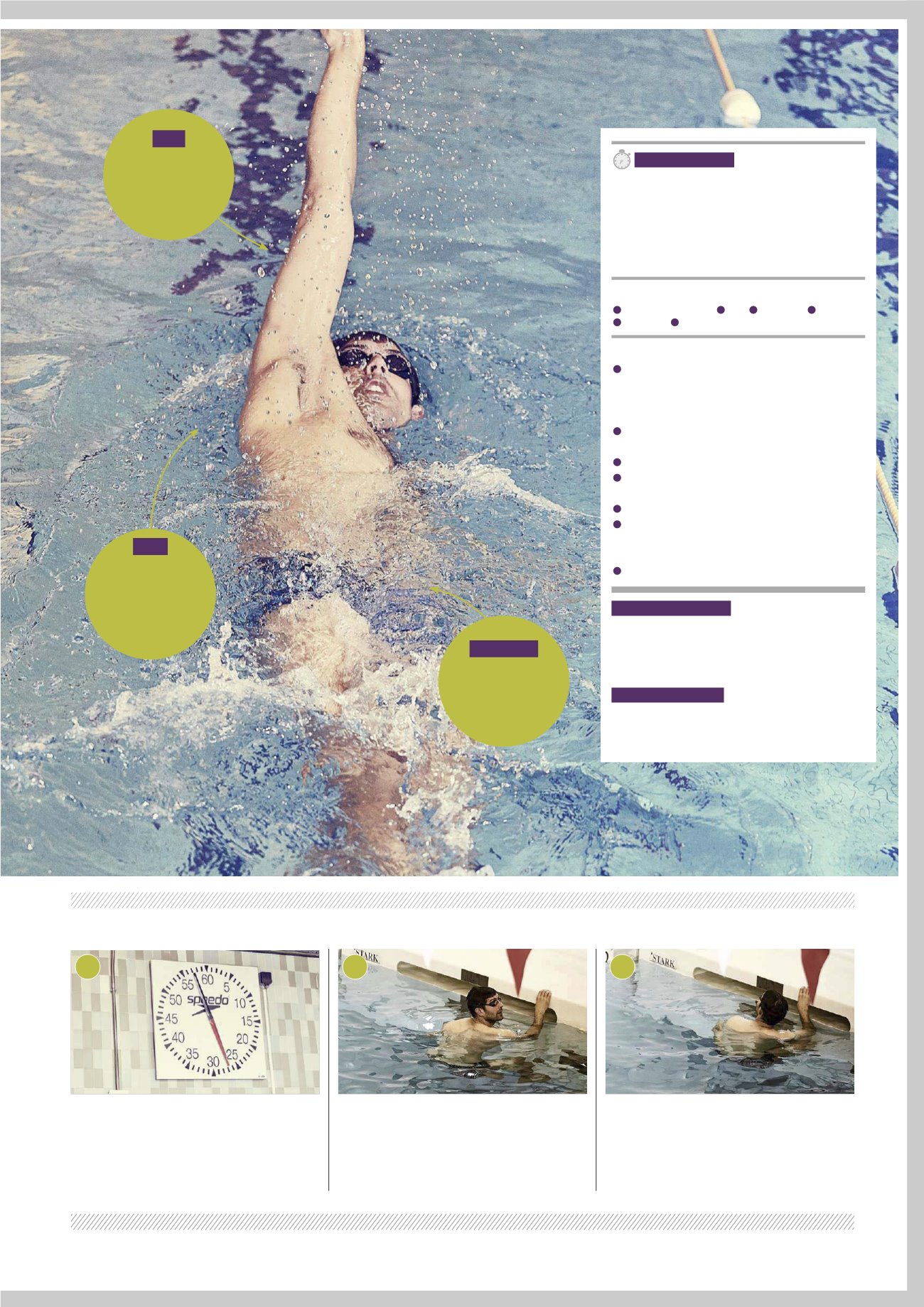

PACE CLOCK: THE PROS
A quick glance at the pace clock allows you to check
your start time and still streamline well off the wall.
You can also use it to check your pace, count your
lengths or set yourself targets as the set goes on.
And if you don’t enjoy swimming, a little mental
arithmetic can help the time fly by.
USING THE CLOCK
Many triathletes rely on their watch for everything.
Sure, sometimes it can be a useful tool so you have
less to focus on while you’re swimming. But if you
don’t have a watch – or even if you do – sometimes
it’s better to forgo the tech and just use the pace
clock on the wall.
WATCHES: THE CONS
Too many athletes focus on starting and
stopping their watches rather than worrying
where others are in the pool around them. As
a rule of thumb, look at the clock and try to
leave a 5-10sec gap to the person in front of you
so you’re not swimming in their slipstream.
COACH JOHNWOOD SAYS:
USE THE POOL CLOCK TO HELP PACE YOUR SWIM
1
2
3
FEBRUARY 2017
I
WWW.220TRIATHLON.COMI
95
SWIM
THE
SESSION
KIT CHECKLIST
SWIMSUIT/TRUNKS HAT GOGGLES DRINK
PADDLES POOL CLOCK
40min pool swim
WARM-UP
4 x 100m as: 50m front crawl (FC), 25m
backstroke, 25m kick; 10secs rest between
intervals (RI)
MAIN SET
12 x 25m FC, building each 25m to finish fast;
15secs RI
100m easy recovery
12 x 25m FC, alternating 25m easy and fast;
15secs RI
200m easy recovery
12 x 25m FC, alternating 2 laps fast, 1 lap easy;
15secs RI
COOL-DOWN
300m as: 50m pull, 50m swim
Adapt for beginners
Focus on smooth swimming on the easier sections
and use the lengths to recover. Take longer
recovery periods if you need to – just swim
a couple fewer reps to reduce overall time.
Adapt for Ironman
As an experienced athlete you could do longer
reps – rather than swimming 25m fast you could
do 50m or even 100m if time allows.
Good streamlines off
the wall can help
improve your speed,
especially on the
fast efforts.
STREAMLINE
Make sure that
there’s a significant
difference between
the slow and fast
parts of your
session.
PACE
As you change speed,
try to accelerate your
hands underwater and
push faster rather than
throwing your arms
forward. Cadence will
rise naturally.
PUSH

















